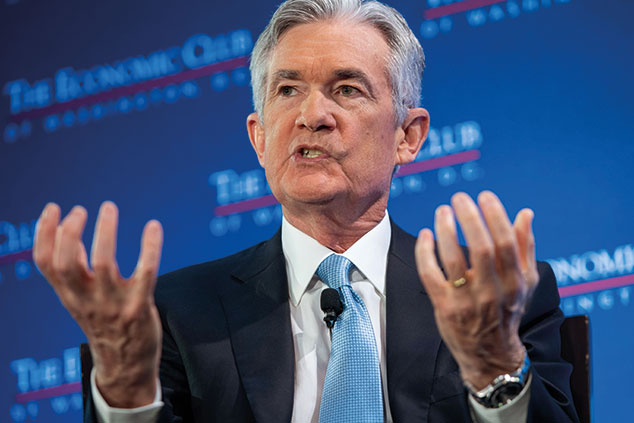
The US central bank is “unwinding its Frankenstein experiment and stricken markets are the unwilling guinea pig”, as Tom Rees puts it in The Daily Telegraph. After a decade of quantitative easing (QE), whereby the Federal Reserve injected money into the economy by buying bonds with printed cash, it is now doing the opposite. The Fed has embarked on quantitative tightening (QT), which means it is withdrawing money from the system by selling the bonds to the tune of $50bn a month.
This has come on top of its regular interest-rate hikes. David Rosenberg of Gluskin Sheff told Finanz und Wirtschaft that the Fed’s QT last year was the approximate equivalent of a 1% interest-rate hike. The Fed’s assets have now fallen from a peak of 23% of GDP in 2017 to 17%.
This leaves the Fed’s balance sheet at “barely more than half the ECB and the Bank of England and only a small fraction of the size of the Bank of Japan’s balance sheet”, according to Capital Economics. Meanwhile, the European Central Bank (ECB) announced this month it will no longer increase its holdings of government bonds for the first time in almost four years, says Kate Allen in the Financial Times.
The Bank of Japan is still engaging with QE, but it can “no longer offset the Fed’s QT”, says Clemens Schmale on GodmodeTrader. Global central banks went from $2.69trn in new annual credit growth in December 2017 to $410bn in credit contraction by December 2018, according to Seeking Alpha.
December’s stockmarket tumble “was pinned on a cocktail of worries from trade tensions to a darkening global growth outlook”, says Rees. But some fear that it’s no coincidence that the turbulent final quarter “coincided with the moment that QE tipped into QT globally”. Given that the previous expansion of liquidity helped “inflate asset prices”, it should not come as a surprise “that asset prices have come under pressure as global liquidity flows reverse”.
Nevertheless, liquidity-addicted stockmarkets needn’t lose hope just yet. US Fed chair Jerome Powell has indicated that he will be “patient” with interest-rate hikes. Given the recent market turmoil, and signs of a slowing global economy, it’s possible the Fed won’t raise rates at all this year, while some analysts think there could be a pause in QT too. A serious downturn could even prompt looser money. Central banks are attempting slow withdrawal; cold turkey is not on the cards.
How palladium is outshining gold
Palladium is on a roll. It has risen by 65% to $1,400 per ounce, a new record high, since mid-August, eclipsing gold for the first time in over a decade last month.
The metal is used in emission-reducing catalytic converters in petrol engines. High environmental standards and the backlash against diesel in Europe, along with new emissions standards in China, are fuelling demand. Supply, meanwhile, is looking more and more constrained. Palladium “is more valuable than gold as it is rarer”, Michael Jones, chief executive of Platinum Group Metals told Barron’s.
While there are dozens of gold mines around the world, only two are primarily mining palladium. There are “no signs” that palladium’s deficit is going away, Dominic Schnider, head of commodities and APAC forex at UBS Wealth Management told Reuters.
“We expect palladium auto demand growth to continue for a couple of years,” says a UBS report. Myra Saefong of Barron’s cautions that car makers might begin to favour the metal’s cheaper alternative, platinum, which can be used in petrol-engine catalysts.
Still, any switch would take carmakers at least 18-24 months to implement. For now, then, palladium’s position seems secure. Investors can bet on palladium with an exchange-traded fund tracking the spot price, the ETFS Physical Palladium (LSE: PHPD).